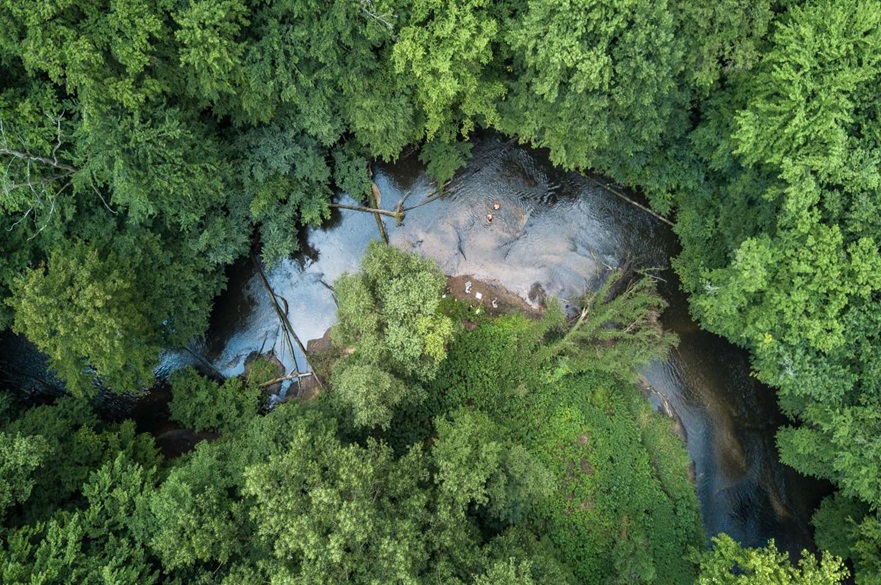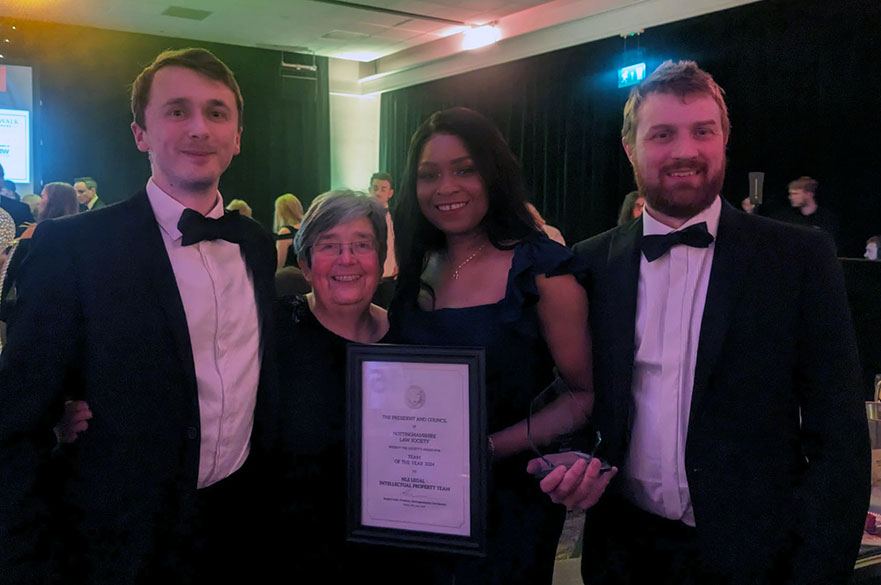Water quality of Europe's rivers: better, but not good enough
Trends in the ecological quality of rivers from 23 European countries have been published for the first time – revealing that river health is still not good enough.

An international research team led by Senckenberg Research Institute and Natural History Museum Frankfurt and involving Nottingham Trent University studied rivers in 23 European countries, using data on invertebrates from 1,365 sites.
The study, published in the journal Nature Ecology & Evolution, shows the annual changes in the ecological quality of rivers since the 1990s for the first time. While the quality has increased overall, the positive trend stalled around 2010. The researchers warn that on average, the required “good” ecological condition has not been achieved in rivers.
River regulation, invasive animal and plant species, global climate change, and pollution – humans are severely impacting the ecosystems of rivers and streams.
“As a result, around 60 percent of Europe’s rivers are currently not in a good ecological condition,” said Professor Dr Peter Haase from Senckenberg.
He said: “In Germany, this figure is even as high as around 90 percent. The EU Water Framework Directive, in force since 2000, was intended to remedy this situation, but to date there has been no reliable data on changes in the ecological quality of rivers over time.”
Together with his colleague Dr James Sinclair and an international research team, Professor Haase evaluated the data on river-dwelling invertebrates from 1,365 locations in 23 European countries to examine the temporal trends of anthropogenic influences.
Dr Sinclair said: “Based on this unique data set, we were able to quantify the change in ecological quality in rivers on an annual basis since the early 1990s.”
Professor Haase adds: “In order to assess the anthropogenic impacts, we first looked at how the biotic communities have changed compared to their initial condition over the course of the study period from 1992 to 2019. This allows us to assess long-term trends in ecological quality at a European level.”
First author Dr Sinclair continues: “We found that ecological quality generally increased from the 1990s until 2010, as did the number of sensitive species, indicating reduced anthropogenic impacts – but this positive trend came to a halt around 2010. The necessary ‘good’ ecological status, as stipulated in the EU Water Framework Directive, has also not yet been achieved on average.
“The improved water quality is likely due to European measures that were increasingly introduced starting in the 1980s, such as improved wastewater treatment.”
In their overview of ecological water quality, compiled for the first time for all of Europe, the researchers show that improvements have stagnated since the 2010s. The scientists cite new and existing stress factors such as pollution and habitat change, increasing negative effects such as climate change, and emerging problems such as the introduction of new types of pesticides or pharmaceuticals as probable causes.
In a second step, the researchers correlate the determined ecological quality with common indicators such as the abundance or diversity of species or the composition of faunal communities, as well as with common biomonitoring indices that reflect the occurrence of sensitive species.
“Our work is based on the fact that there are numerous studies that report sometimes contradictory changes in biodiversity, i.e., some claim improvements while others claim deterioration. This is due to the fact that some of these studies are limited to individual biomonitoring indices, although it has not been clear to date whether these indices adequately reflect the ecological condition at all,” explains Professor Haase.
“It further becomes apparent that biotic communities show different reactions to anthropogenic influences, depending on the spatial scale. For example, negative impacts can lead to a local decline in abundance or species richness. Regionally, however, no overall change is recorded because the losses are offset by increases in other places. Or there may even be an increase in the number of species if species that can tolerate the changes multiply,” say the scientists from Gelnhausen.
According to the newly published study, the different trends in biodiversity found in many studies may therefore be the result of different spatial scales – local, regional, continental – or different biomonitoring indices. As a further complication, most studies on biodiversity lack baseline data prior to human impact. “Without baseline data, however, it is difficult to determine whether changes in biodiversity are due to anthropogenic influences or natural fluctuations,” says Dr Sinclair.
“Our results show that without sufficient data over an extended period of time and a careful selection of metrics, biological trends and anthropogenic influences cannot be reliably represented. Among the indicators used to date, only species diversity is a fairly reliable indicator of a change in ecological water quality. This should absolutely be taken into account in future assessments,” adds Professor Haase in conclusion.
Rachel Stubbington, Professor of River Ecology in Nottingham Trent University’s School of Science and Technology contributed to the study.
She said: “This study highlights the positive change in the health of river ecosystems that can be achieved when effective action is taken to control human impacts such as water pollution. However, the levelling-off of improvements in ecological quality since the 2010s demonstrates the urgent need for further action to address the range of impacts that continue to reduce the health of our rivers.”
-
Notes for editors
Press enquiries please contact Dave Rogers, Public Relations Manager, on telephone +44 (0)115 848 8782, or via email.
Nottingham Trent University (NTU) has been named UK ‘University of the Year’ five times in six years, (Times Higher Education Awards 2017, The Guardian University Awards 2019, The Times and Sunday Times 2018 and 2023, Whatuni Student Choice Awards 2023) and is consistently one of the top performing modern universities in the UK.
It is the 3rd best modern university in the UK (The Times and Sunday Times Good University Guide 2023). NTU is the 5th largest UK institution by student numbers, with over 40,000 students and more than 4,400 staff located across five campuses.
It has an international student population of almost 8,000 and an NTU community representing over 160 countries. NTU owns two Queen’s Anniversary Prizes for outstanding achievements in research (2015, 2021). The first recognises NTU’s research in science, engineering, arts and humanities to investigate and restore cultural objects, buildings and heritage. The second was awarded for research on the safety and security of global citizens.
The Research Excellence Framework (2021) classed 83% of NTU’s research activity as either world-leading or internationally excellent. 86% of NTU’s research impact was assessed to be either world-leading or internationally excellent. NTU is rated 5/5 stars overall and for Teaching, Employability, Internationalisation, Research and Facilities (QS Stars 2022).
NTU is a top five university for widening participation with 25% of NTU students coming from disadvantaged backgrounds (HESA 2021-22). It was the first UK university to sign the Social Mobility Pledge in 2018 and was named ‘University of the Year’ at the UK Social Mobility Awards in 2019, NTU is the most sustainable university in the UK and 2nd in the world (UI Green Metric University World Rankings, 2022).
- Subject area: Sciences including sport sciences
- Category: Press office; Research; School of Science and Technology


